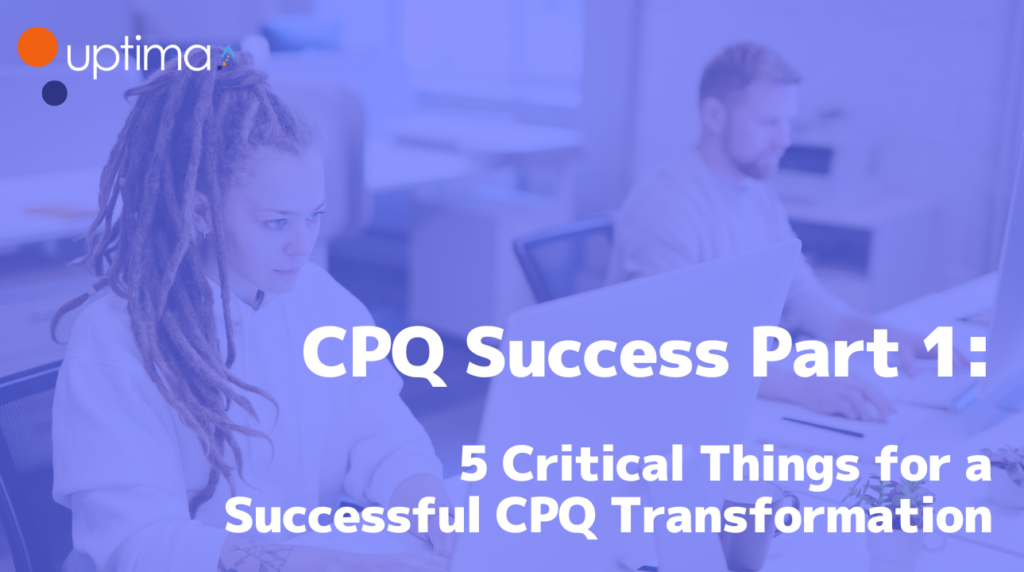
Do you want this CPQ project to be minimally disruptive? Then, you’re already preparing to fail.
To be successful with CPQ (and Billing), you must come to the table with a transformational mindset that is open to significant change, and you must adequately prepare your user base for that change. This is not like you are preparing your users for the next Windows upgrade.
Your goals are to transform your sales process. So be prepared! For what, you ask?
Uptima has seen too many failures due to companies that simply take a “Lift and shift” approach versus a transformational one. You cannot expect to just roll-out CPQ as you would Windows 11. You are necessarily going to need to transform your current business processes.
You think that sounds too heavy? It may not be, but to understand how heavy this change will be, it will be necessary to fully understand and document existing business processes and map out the new ones. The degree of change largely depends on how organized (or not) your current processes are and whether or not they adhere to general best practices.
We can’t prepare for you, but we can tell you exactly what to do to be maximally prepared before the project. This includes things such as examining and understanding your product catalog and how everything is sold.
This sounds like a no-brainer, but you’d be surprised how often we run into differing opinions on the same products or services. Also, mapping out your current business processes in standard flow models is a huge help. If you’d like, we would be happy to share some examples to help you get started!
Don’t forget to prepare them too! Not involving all stakeholders, such as end users (Sales and Finance), from Day 1 is one of the most grave and common mistakes in CPQ implementations. We have seen disastrous adoption failures due to CPQ being designed, planned, built, and even tested in a vacuum.
Your people will say “I don’t have time for this,” especially Sales. This is because, for them, time taken away from their job translates directly to money out of their paychecks. You may wish to figure out a way to budget for special incentives or bonus pay for those users whose commissions would suffer. After all, this is an investment in a much faster, efficient, lean, mean Sales machine!
It’s not going to be successful without the input of the core users – the Sales team!
This is often not found in the wheelhouse of corporate IT teams or smaller SI firms. However, without a solid understanding of basic GAAP, very bad things can happen. Then, those bad things can translate to revenue recognition troubles.
At best, we’ve seen companies who have to build very labor-intensive, manual processes involving data warehouses and highly specialized procedures (manual and/or automated) to transform raw sales and order data into billing records for the ERP or directly for the revenue recognition engine. At worst, well – we don’t really want to talk about it, but you can use your imagination.
It is critical to understand that the platform works well, in a very specific way, for specific reasons (mostly for the purposes of GAAP). There are best practices, such as, you don’t change history: you never modify an accepted quote, you create an amendment; you never modify an order, you amend; you don’t write custom code to go around these guardrails, etc.
When we have seen customers who insist on circumventing the out-of-the-box functionality, we often walk into situations where they want to add Billing. Then, they either need to massively customize Billing or it just flat out won’t work unless they back out their customizations and reconfigure to best practice. Both are expensive, risky, and time-consuming.
To summarize, be willing to transform how you operate, prepare, communicate, and implement your plan. Be on the lookout for Part Two of this series of CPQ Success tips that will emphasize the importance of the user experience.

Alexandra Stehman
Principal Consultant at Uptima